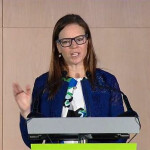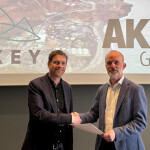Electronic monitoring projects across the United States recently received grants worth USD 3.9 million (EUR 3.4 million), the National Oceanic and Atmospheric Administration (NOAA) and the National Fish and Wildlife Foundation announced.
The grants aim to modernize fisheries data management, monitoring, and reporting by creating tools that lower the costs of collecting and reviewing data.
"Electronic monitoring and reporting advancements will continue to improve the United States fisheries management that is world-renowned as a model of success,” NOAA Fisheries Assistant Administrator Chris Oliver said in a statement.
Monitoring and reporting technology – and even artificial intelligence – have enormous potential to assist with the collection of fisheries data that can feed directly into management models, making them more robust and adaptable, according to Seafood Harvesters of America Executive Director Leigh Habegger.
"Advancing electronic monitoring technology is critical to lowering costs for the commercial fishing industry while ensuring NOAA still receives the data necessary to inform scientifically sound management of our stocks," Habegger told SeafoodSource.
In particular, Habegger is eager to see technological advances that allow for better integration of electronic data into management – including improvements in wireless transmission of data and artificial intelligence to review data.
"Investing in the advancement of electronic monitoring paves the way for innovation and creativity which in turn, create more effective and efficient systems," Habegger said.
The awards will go to diverse projects for fisheries in 13 states and nationally.
A grant of USD 531,000 (EUR 466,000) will go to the Aleutians East Borough to increase electronic monitoring for the small vessel Pollock mid-water trawl fleet, and to help the fleet comply with discard regulations. Another grant of USD 247,000 (EUR 217,000) will help the New England groundfish fishery and integrate artificial intelligence algorithms into catch reviews to better automate catch accounting and streamline data storage.
A third grant of USD 173,000 (EUR 152,000) will enable the assessment of the feasibility of using electronic monitoring to record catch and bycatch in California's deep-set buoy fishery by comparing the cost of human observers to camera-based systems.
"These grants will directly support the health and long-term sustainability of U.S. fisheries by increasing the number of vessels using electronic technologies and by improving data collection, review and storage," National Fish and Wildlife Foundation CEO and Executive Director Jeff Trandahl said in a statement.
The USD 3.9 million (EUR 3.4 million) of grants were supplemented by USD 5.7 million (EUR 5.1 million) in matching contributions, for a total of 9.6 million (EUR 8.6 million). The grants were part of the Electronic Monitoring and Reporting Grant Program, which was established in 2015 to integrate technology into fisheries management.
So far, the program has dispensed more than USD 17.7 million (EUR 15.7 million) to 57 projects in the U.S. with the aim of integrating technology into fisheries data collection and observation. Including matching contributions, the grant total reaches USD 45.4 million (EUR 40.3 million).
Photo courtesy of NOAA







